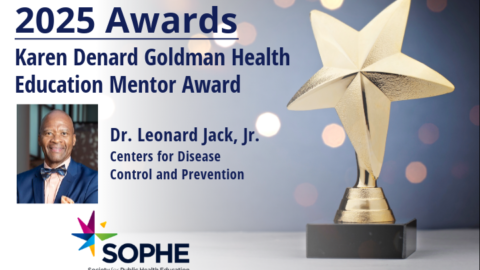Social media interventions assist in HIV care and treatment and are open access in celebration of 30 years of Ryan White CARE Act
Washington, D.C- August 6, 2020 – The Society for Public Health Education (SOPHE) announces the open access, special collection of papers in the journal Health Promotion Practice (HPP) describing innovative social media interventions to improve health outcomes of youth and young adults with HIV. The eight peer-reviewed papers are featured in the HPP September 2020 issue.
The special collection highlights significant promise in using tailored, mobile technology-based platforms to improve HIV-related care and treatment to reach young gay, bisexual, and other men who have sex with men (GBMSM) and transgender women in ten cities throughout the country resulting from a recent Health Resources and Services Administration’s Ryan White HIV/AIDS Program Special Projects of National Significance (SPNS) Program initiative.
Ten demonstration projects funded by the SPNS Program initiative titled, “Using Social Media to Improve Engagement, Retention, and Health Outcomes along the HIV Care Continuum,” implemented and evaluated the acceptability and impact of using different social media and messaging services (e.g., Facebook messaging and optional secret group, texting, and original or adapted mobile apps). Such technologies previously have been found to be used frequently by GBMSM and transgender women aged 18 to 34.
According to the Centers for Disease Control and Prevention, GBMSM represent 70% of new U.S. HIV diagnoses and 14% of transgender women are living with HIV, with higher rates among racial/ethnic minority underserved and underinsured populations. Those populations with both low rates of HIV care engagement and viral suppression are at risk for poor health outcomes and HIV transmission.
Data from the four-year qualitative and quantitative studies showed significant outcomes using the mobile health applications, including increased patient engagement and retention in care, support in medication adherence, patient adjustment to their diagnosis, improved social support, and reduced stigma. One study, utilizing an app named “OPT-In for Life,” also showed increases in viral suppression rates in young HIV initiative participants from 64% at baseline to 85% at six-month and at 12-month follow-up and 91% at 18-month among participants who were retained in care.
“Collectively, these studies show the tremendous health potential to use social media and health technology to support youth and young adults with HIV, particularly affected racial/ethnic, sexual, and gender minority populations,” says co-guest editor Ronald Brooks, PhD, behavioral scientist at the UCLA Department of Family Medicine. “Tailored social media and apps can prove vital in the armamentarium of HIV treatment in overcoming barriers such as stigma, inconvenience, lack of social supports, and lack or unawareness of supportive services.”
Further evaluations can help to understand more subtle differences in health technologies and user experiences of youth and young adults with HIV. For example, in a study of cisgender men who have sex with men (MSM) and transgender women with HIV, MSM participants perceived greater social benefit from use of social media platforms, such as Facebook and Instagram, than did transgender women. The authors suggest that this difference could be because of online transphobia experienced by transgender women and call for additional evaluation.
“The HIV/AIDS space has long been an important source of innovation in public health,” says HPP Editor-in-Chief Dr. Kathleen Roe. “We hope that these articles equip practitioners and community-based scholars with evidence-based inspiration for boldly reimagining health promotion strategies and interventions.”
HRSA’s Ryan White HIV/AIDS Program SPNS Program supports the development of innovative models of HIV care and treatment to respond quickly to emerging needs of clients served by the program. SPNS advances knowledge and skills in the delivery of health care and support services to underserved populations with HIV. Through its demonstration projects, including the social media initiative, SPNS evaluates the design, implementation, utilization, cost, and health-related outcomes of innovative treatment models.
The open access collection of HIV and social media articles is available in advance of the full HPP September issue at https://journals.sagepub.com/hpp/hrsa-collection.
# # #
About SOPHE
The Society for Public Health Education (SOPHE) is a nonprofit organization founded in 1950 to provide global leadership to the profession of health education and health promotion, and to promote the health of society. SOPHE represents a diverse membership of 4,000 professionals and students who work and learn in various public and private organizations and universities to advance health education theory and research, develop disease prevention and health promotion programs, and promote public policies conducive to health. For more information visit www.sophe.org.
About Health Promotion Practice
Health Promotion Practice (HPP) is an official journal SOPHE. Published bimonthly, the journal is a forum for authoritative research, commentary, practical tools, and promising practices that strategically advance the art and science of health promotion and disease prevention. Now in its 20th year, HPP’s scope includes policy, programs, professional preparation, and career development in diverse settings, including communities, health care, work sites, and schools. HPP’s Editor-in-Chief Dr. Kathleen Roe, is a SOPHE Distinguished Fellow and Professor and former Department Chair of Health Science and Recreation, San Jose State University.


